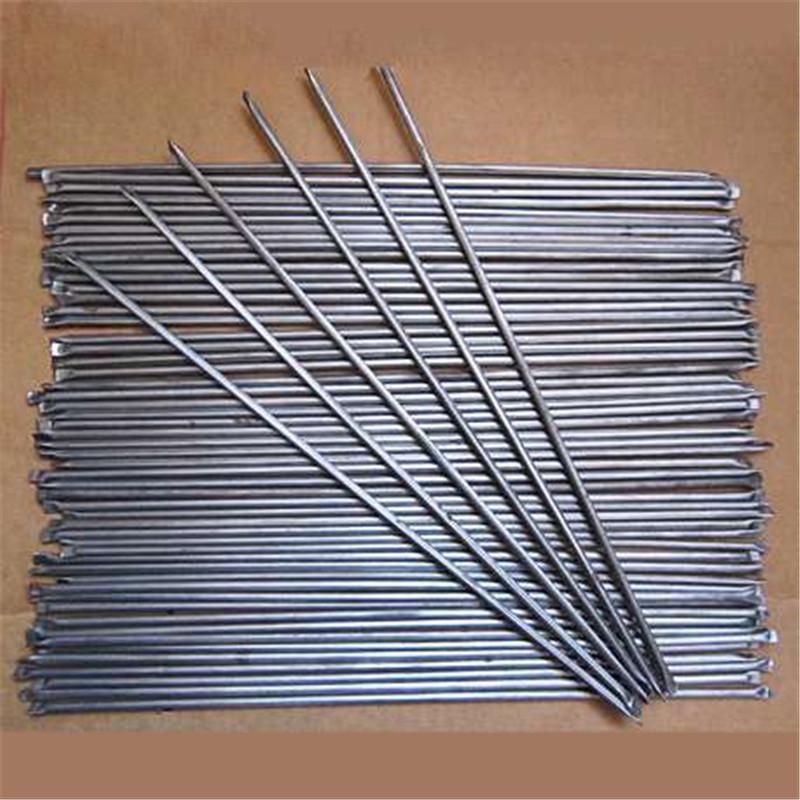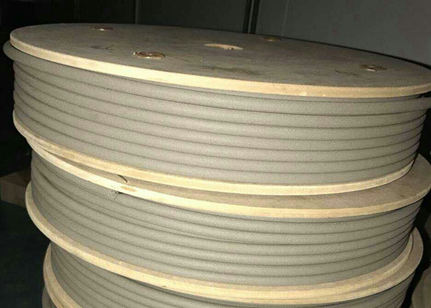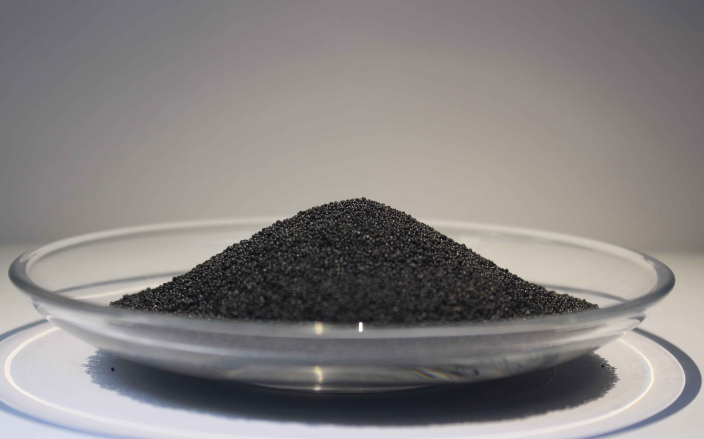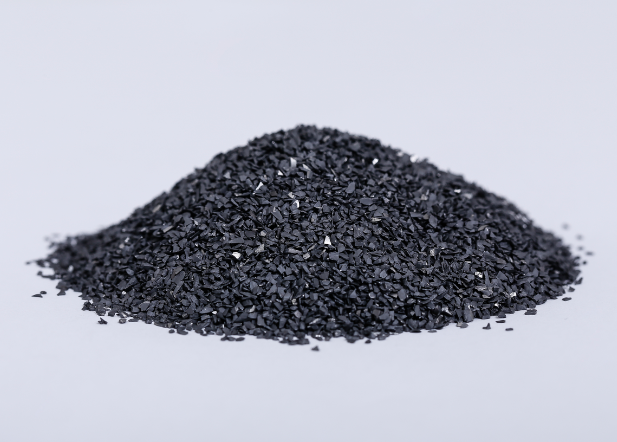National Maize Variety Test DNA Fingerprinting Management Measures (Trial)
Article 1 In order to strengthen the test management of maize varieties and improve the consistency and authenticity of the national varieties of tested maize varieties, the present Measures are formulated in accordance with the “Approval Methods for Major Crop Varietiesâ€.
Article 2 The DNA fingerprint identification referred to in this method is based on the determination of the consistency and authenticity of the varieties based on the DNA fingerprinting bands of different species. The results of the test are used as the basis for the elimination of the test species, continued testing, and recommended validation.
Article 3 This method is based on the National Standard for Testing the Consistency and Authenticity of DNA Testing of Maize Varieties.
Article 4 According to the requirements of the annual test plan for submitting samples, the test host or unit responsible for numbering shall provide the seed samples required for DNA fingerprinting to the designated testing units in a timely, sufficient, and quality-reliable manner.
Article 5 The backup samples of regional trials and preliminary trials shall be kept for more than 3 years, and shall be preserved for more than 10 years by the national backup samples of the certified species, and shall be used for the species test or the standard sample for inspection and identification.
Article 6 According to the performance of the field variety traits, the degree of consistency between the preliminary test and the first year regional test variety shall be checked; and the consistency degree of the regional test variety entering the second year shall be checked.
Article 7 The consistency check is a grade 1 to 3, which can be tested normally or recommended for review. For a consistency test that is a grade 4 to 5, the test is stopped or not recommended for review.
Article 8 Both the preliminary test and the regional test shall be tested for authenticity, and the degree of difference between the test species and the known species shall be examined; the degree of difference between the same test species during interannual and different groups shall be determined.
The standard DNA fingerprinting of this species was synchronized.
Article 9 The same type of cessation test was found in different experimental years, different experimental groups, national and provincial trials with large genetic differences (differential sites ≥ 2).
It was found that the genetic divergence between the test cultivar and the known cultivar was small, that is, the test was stopped with the same or high degree of similarity (differential sites ≤ 1).
Article 10 Two (or more than two) test cultivars with different names are genetically identical or highly similar (differential loci ≤ 1) and are negotiated into unanimous written opinions by the participating units and submitted to the National Crop Variety Approval Committee for Maize. Professional committee, determine handling opinions.
Article 11 For varieties that have not passed the consistency or authenticity test, the provincial competent seed management department shall be informed by the competent department of the trial, and the provincial seed management department shall promptly notify the participating units of the variety to the test results.
Article 12 For the test units in different years, different groups, national and provincial tests during the test period, changing the variety of test units will stop the application qualification of all the varieties of this crop in the next year.
Article 13 Confirmation of adherence to the principle of prioritization of known species. That is, the application for the protection of new plant varieties, validation, and participation in national or provincial regional trials and production trials is prioritized. If national or provincial breed trials are to be carried out in the same order of protection or approval, the national trials will be given priority; if the participants participate in regional trials or production trials, the production trials will be given priority.
Article 14 The participating units of the varieties hold objections to the test results. Within 20 days after the information is obtained, please submit a written review to the Maize Professional Committee of the National Crop Variety Approval Committee. The Maize Professional Committee shall make reconsideration opinions within 60 days. The result is a final ruling.
Article 15 The present Measures shall be formulated by the Maize Professional Committee of the National Crop Variety Approval Committee;
Article 16 The present Measures shall be interpreted by the Maize Professional Committee of the National Crop Variety Approval Committee;
Article 17 These Measures shall be implemented as of the date of promulgation.
1.Welding materials
In Welding, substances called filler materials or consumables are used. As the name implies, these substances provide filler or a body of molten materials that provides a strong bond to be formed between the base metals used. Most welding processes will also require some form of shielding to protect both the main components and filler from being oxidized during the process.
The type of welding materials used during welding depends on the nature of the job intended. Electrodes draw the necessary energy in order to perform welding applications. Luoyang Golden Egret Company has any kind of welding materials include CTC Welding Rod /rope, SCTC welding rod/rope, TC electronic welding rod, Ni-based welding rod, flux-cored Welding Wires, solid welding wires and etc.
Welding can be applied in different kinds of industries such as building and construction, oil and gas, marine, power generation, steel, mine tools, automobile, transportation and etc.
2. Welding rod
1)Cast tungsten carbide based tubular rod
The hard phase of the rod is cast tungsten carbide which leads to higher hardness and better wear-resistance.
Wear resistance: the wear resistance is 6-7 times better than others. Tested by ASTM G65
Mainly used for Mining machinery, Geological tools, Petroleum drilling tools etc, by Oxy-Acetylene with weak carburizing flame.

Product recommendation:
GT1103 (CTC, 60-80 mesh),
GT1103-1(CTC, 20-30 um),
GT1103-2(CTC, 40-60 um)
2)The hard phase of tube rod is carbide pellets which leads to higher impact resistance and better wear resistance than CTC cloase rod.
Wear resistance: the wear resistance is 6-7 times better than others. Tested by ASTM G65 wear test.
Mainly used for mining machinery. Geological tools etc; by Oxy-acetylene with weak carburizing flame.
Product recommendation:
GT2102 (Cemented carbide grit, 30-60mesh)
GT2102-2(Cemented carbide grit, 30-40mesh)
GT2102-3(Cemented carbide grit, 40-60mesh)
3)Tube rod is composited by Cemented carbide pellets, Spherical CTC and CTC. The layer has higher impact resistance, better wear resistance and good fluidity than other rods.
Wear resistance: the wear resistance is 6-7 times better than others. Tested by ASTM G65.
Mainly used for oil method drill bits, such as Tri-cone bit, Steel tooth bit, PDC bit, etc. By Oxy-Acetylene with weak carburizing flame.
Product recommendation:
GT3302 (carbide pellets, 20-40mesh)
GT3302-1(carbide pellets, 14-40um)
4)The hard phase of the rod is monocrystal WC, the welding layer has a higher wear resistance and better impact resistance.
The wear resistance is 6-7 times better than others, tested by ASTM G65 method.
Mainly used for the repair and strength for oil drills bits, such as PDC bit diameter holding by Oxy-Acetylene with weak carburizing flame.
Product recommendation:
GT4104 (Monocrystal WC, 80-200mesh)
3. Welding Rope
Made form mixture of CTC and self-fluxing nickel alloy covering on nickel wire. The CTC is in spherical or irregular with good wear resistance; the nickel alloy is in spherical or nearly spherical shape with good wettability and erosion resistance and better corrosion resistance than tubular rod.
Recommend to use Petroleum drilling tools, Concrete mixing blade, Mud pump, Coal sluice, Coal drill pipe, Tunnel drilling machinery etc.
By Oxy-Acetylene Welding with weak carburizing flame.

Product recommendation:
GS110450N (CTC, 4mm, HRC 47-55)
GS110550N (CTC, 5mm, HRC 47-55)
GS110650N (CTC, 6mm, HRC 47-55)
4. Welding Bar
The rod is sintered by CTC and Ni-based powders. The CTC(Cast Tungsten Carbide) is in irregular or spherical shape with better wear resistance and the nickel alloy is in spherical or nearly spherical shape and has good wettability with cast tungsten carbide. The cladding layer has a higher impact resistance and better wear resistance.
Its wear resistance and corrosion resistance is between tube rod and flexible rope.
Mainly used on the Steel PDC bit, Concrete mixer blade, Mud pump, Miner chute, Miner drill stem and Mechanical parts of Tunnel rock drill machine etc.
Welded by Oxy-Acetylene with weak carburizing flame.
Product recommendation:
GD4025253-3(CTC, SCTC, 4*600/6*600)
GD4030303-3(CTC, SCTC, 4*600/6*600)
5. Welding wire
Intensified molybdenum titanium vanadium composite chromium carbide welding wire can improve layer`s bonding strength and tenacity. This wire can use for multilayer welding which has no peel off, and it can maintain good wear resistance under certain impact working condition.
Product recommendation:GSQD671Mo-4(1.6mm)
Medium carbon and high chromium wear resistance welding wire has a higher hardness, stronger wear resistance, and excellent toughness by adding a certain amount of molybdenum alloys and boride. It has a better impact resistance and strip resistance than high chromium cast iron type materials
Product recommendation: GSQD621Mo-4(1.6mm)
With high sphericity & excellent alloy organization, cemented carbide pellet is mainly used in welding, as an adding material of PTA Powder , tubular welding rod, to improve the wear resistance of the workpieces greatly.
Product recommendation: GQ06

Cemented carbide grit with different percent of cobalt has good abrasive resistance and is widely used for making grinding, polishing and cutting tools.
Product recommendation: GS08A

Weld Materials,Tubular Welding Rod,Welding Electrodes,Stainless Steel Welding Rod
Luoyang Golden Egret Geotools Co., Ltd , https://www.xtcalloypowder.com